Keep Commute Options Open with Flex-Benefits
Brace yourselves, it’s coming.

Great things can come out of a well-designed funnel.
I’m referring to the blessèd eventual end of COVID-19 quarantine. I don’t know when, but for the sake of argument let’s assume it’s gonna happen in 2021. I’m imagining that as the vaccine rollout hits full steam and a sizeable chunk of the American populace has had their chance to receive it… And barring any factors that would undercut its effectiveness. We’ll reach some point that feels like the long awaited return to normalcy, and people will to a degree return to the workplace. It may not hit like a ton of bricks, but I’m willing to bet that the eventual surge will take some workplaces and property managers by surprise. There’s a lot of pent up desire for the end of the current situation, and I think we should never underestimate the collective enthusiasm for that sort of satisfaction. At Livable Buckhead, one of our major concerns is how this is going to impact traffic, air quality, and our employer partners’ ability to continue business as usual.
So how do we handle this coming tide?
Our suggestion: By letting commuters pick from a wide menu of options, but making sure that all the real costs are included. This is a policy I’ve advocated before, and it’s rooted in fairness. Employees are free to choose any way to work that suits them, but they bear those costs. By the same token, modes that cost less and benefit others should be incentivized! For example: Let’s look at 3 different commute habits and how they stack up:
- Anna lives fairly close to the office, there’s even a beautiful Greenway Trail that happens to run from near her apartment complex to the office tower where her employer is located. Most days she bikes or walks to work. The daily cost of her commute is literally nothing, and if you want to get technical, she’s saving the company money by filing fewer healthcare claims, improving the risk pool because of the daily exercise she gets.
- Kip lives a bit farther off, but he’s a dedicated public transit commuter and takes the train every day – a monthly MARTA pass is $95 ‘off the rack’. The pass costs something, but less than a monthly parking pass in the office complex’s deck.
- Katie doesn’t live much farther than Kip, but she chooses to drive alone to work each day and park in the deck. A monthly parking pass costs $100, but the company pays for it as a perk.
Three different individuals, 3 commutes, 3 costs. How can we equalize those costs for the employees and the company, without shifting them unfairly? We’ll flip the payment arrangement around by providing everyone an ‘allowance’ of sorts – and applying the organization’s power to subsidize and shift costs. Let’s set the commuter allowance at the cost of a parking pass – since it’s the maximum amount.
- Anna’s commute costs nothing – but what does she get for making the healthy, sustainable choice – aside from a staggering number of points in her fitness tracker? Ideally, she should receive a Parking Cash-Out of $100 each month, since her choice not to drive spares the company that much.
- Kip’s sustainable habit should get rewarded too. If the office participates in Livable Buckhead’s Tran$ave program and provides a discounted monthly MARTA pass as a pretax employee benefit, Kip should be getting back the difference in the discounted $76 MARTA pass to receive a tidy $24 each month. He can bank that money up for an Uber or Lyft for unforeseen circumstances, or the occasional daily parking pass when he needs to cart items to and from the office.
- Katie makes out alright in this scenario too, although she doesn’t have any allowance left over, she’s no worse off than when the program started, and should she choose to experiment with a new way to get to work, she knows all her options are open and waiting.
The most important concept in designing a Flex-Commuter Benefits program for your office is making sure that there’s an equitable ‘funnel’ of options and incentives – one that places the greatest incentives on the modes that do the most good, and costs appropriately on the ones that incur them. No one should be punished for making the choices they need to make to get to work, but some benefits spill over to everyone; benefits that conserve physical space, environmental impacts, and office resources. If you’re interested in trying out a Flex Benefits arrangement for your organization, Livable Buckhead can help you design a program that fits for you, and support your employees with all the information they need to make a change.





